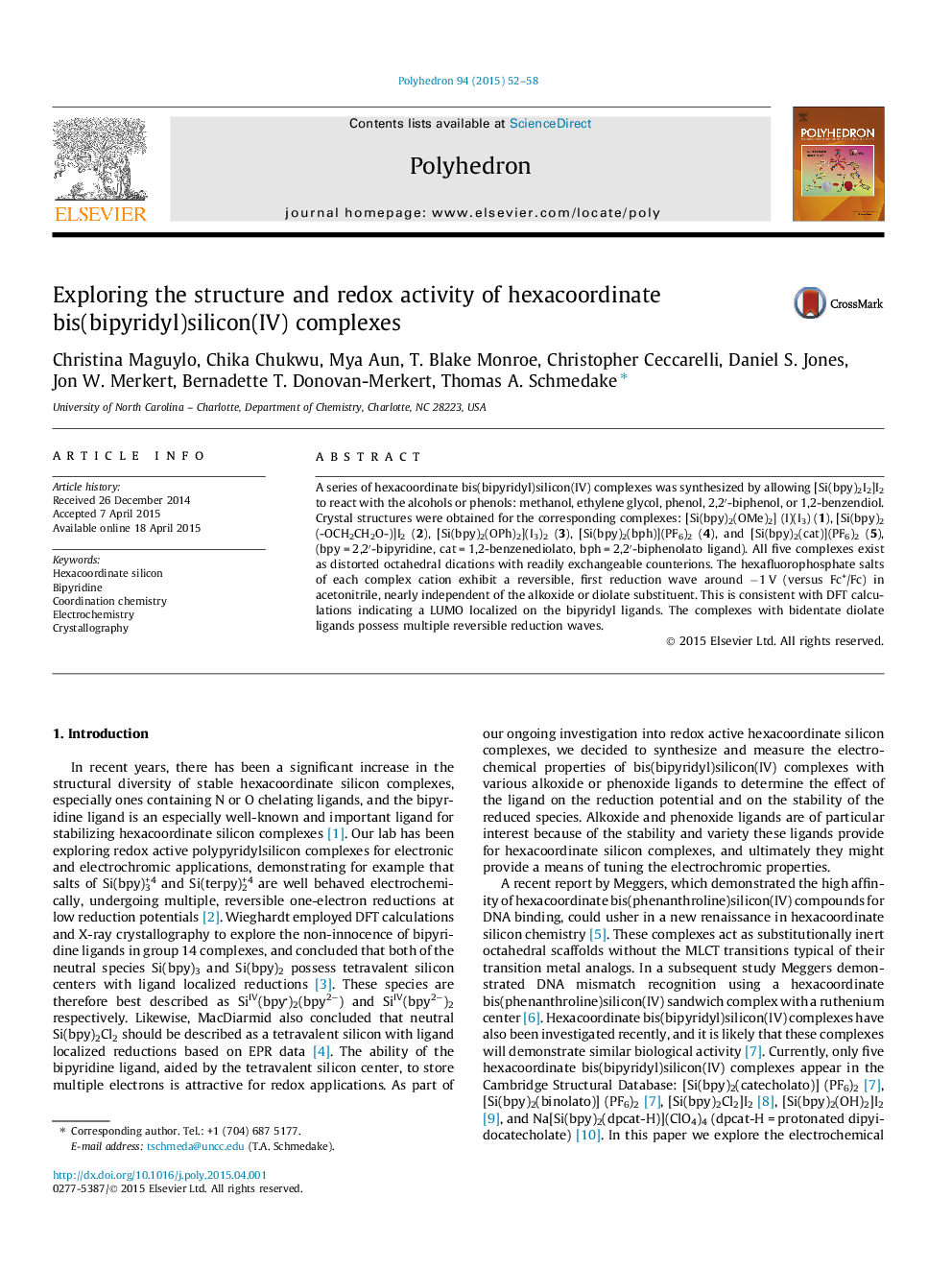| Article ID | Journal | Published Year | Pages | File Type |
|---|---|---|---|---|
| 1334387 | Polyhedron | 2015 | 7 Pages |
A series of hexacoordinate bis(bipyridyl)silicon(IV) complexes was synthesized by allowing [Si(bpy)2I2]I2 to react with the alcohols or phenols: methanol, ethylene glycol, phenol, 2,2′-biphenol, or 1,2-benzendiol. Crystal structures were obtained for the corresponding complexes: [Si(bpy)2(OMe)2] (I)(I3) (1), [Si(bpy)2(-OCH2CH2O-)]I2 (2), [Si(bpy)2(OPh)2](I3)2 (3), [Si(bpy)2(bph)](PF6)2 (4), and [Si(bpy)2(cat)](PF6)2 (5), (bpy = 2,2′-bipyridine, cat = 1,2-benzenediolato, bph = 2,2′-biphenolato ligand). All five complexes exist as distorted octahedral dications with readily exchangeable counterions. The hexafluorophosphate salts of each complex cation exhibit a reversible, first reduction wave around −1 V (versus Fc+/Fc) in acetonitrile, nearly independent of the alkoxide or diolate substituent. This is consistent with DFT calculations indicating a LUMO localized on the bipyridyl ligands. The complexes with bidentate diolate ligands possess multiple reversible reduction waves.
Graphical abstractThe structures of a series of hexacoordinate bis(bipyridyl)silicon(IV) complexes are reported. The hexafluorophosphate salts of each complex cation exhibit a reversible, first reduction wave around −1 V (versus Fc+/Fc) in acetonitrile, nearly independent of the alkoxide or diolate substituent. The complexes with bidentate diolate ligands possess multiple, reversible reduction waves.Figure optionsDownload full-size imageDownload as PowerPoint slide
